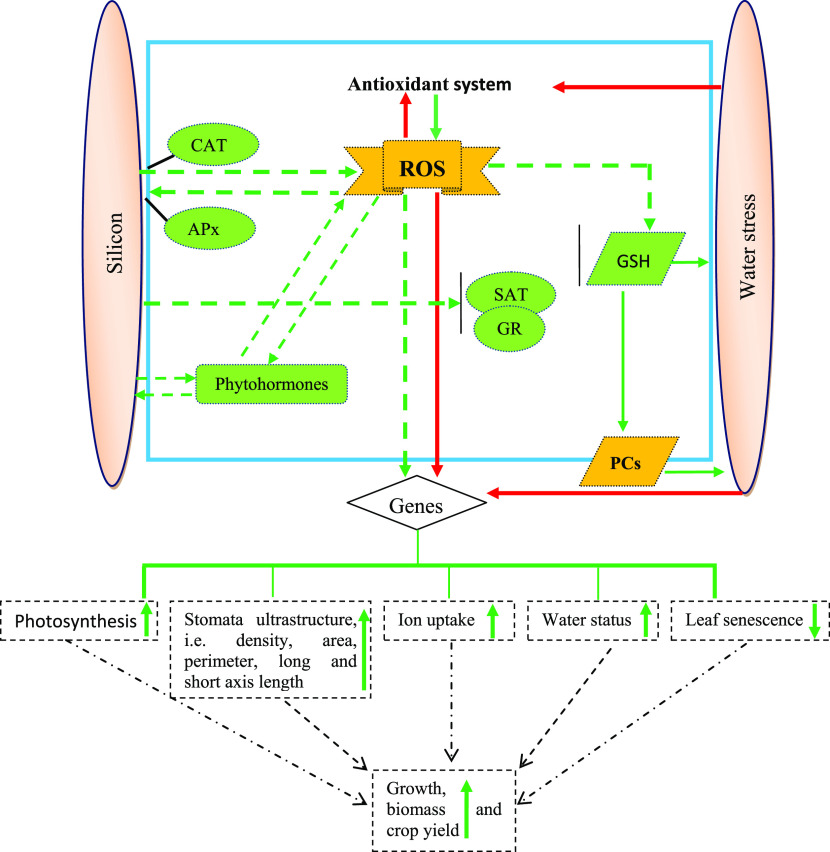Figure 5.
Schematic diagram representing the effects of water stress and defensive system induced by silicon and limited water, underlying sugarcane water stress tolerance. Water stress causes negative impacts by repressing photosynthetic performance, disrupting osmoprotectant status, and negatively influencing water status and ionic balance. Severe water stress can promote the production of reactive oxygen species (ROS). ROS contribute to lipid peroxidation, resulting in oxidative stress that causes growth reduction, biomass loss, and subsequently extreme loss of yield. Conversely, Si shows a protective mechanism against limited water by maintaining or improving water balance, leaf gas exchange, and maintaining ionic balance. As a result, Si improves water stress tolerance by retaining better plant growth and the productivity of stressed plants. CAT—catalase, APx—ascorbate peroxidase, GR—glutathione reductase, GSH—glutathione, PCs—phytochelatins, and SAT—serine acetyltransferase. The dotted arrows indicate possible signaling pathways. The red arrow indicates damage and the green arrow indicates positive effects, respectively.

